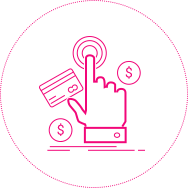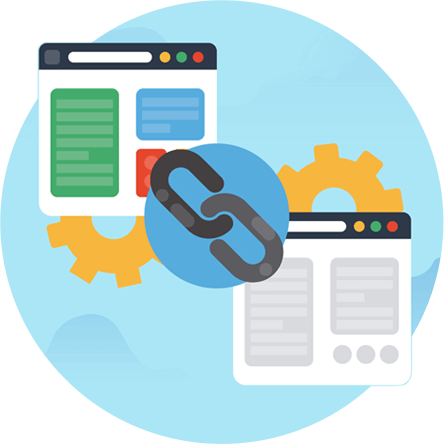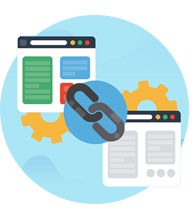A word that sparks fear into the heart of most business owners.
![]() Often followed by high rates of unemployment, cash hoarding and the cutting of essential business services to save even more cash.
Often followed by high rates of unemployment, cash hoarding and the cutting of essential business services to save even more cash.
The thing with cutting marketing activities is that they are considered a luxury by a lot of businesses and often get cut first.
Marketing is an essential activity to not cut.
Why?
Because it generates customers and builds demand.
It’s always been baffling to us why people stop their digital marketing activities, why they would stop buying in customers using PPC if it’s still profitable.
Now is the time to let your competitors stop spending and attempt to run a business with no new customers driving their profits into the ground.
When the COVID-19 global emergency is over, the world will return to a new normal – Likely not to different to what it was before. This means people will be searching, browsing and buying again.
Let’s take a look at why digital marketing can thrive during a recession.
There are a number of reasons that digital marketing can thrive during a recession.
The first being PPC. Already in this huge global pandemic and recession of 2020 we are seeing PPC campaigns perform better than ever.
Some number and cases reports are showing an increased conversion rate of 5,000% using Google PPC!
Let’s face it, with most business offices shut and unable to trade face to face, a 500% let alone 5000% increase in conversions could be enough to get a business through the next few months.
So, why is PPC so effective?

The answer is relatively simple:
Cash is king and you can make your £1 work harder.
Search trends show that the way we search online is set to change massively over the coming years.

PPC is an auction, with less businesses spending it becomes slightly cheaper.
&

PPC can also be tested and produces rather quick results compared to a digital marketing activity such as SEO – Although SEO has its place as we will discuss later.
The speed at which you can execute a PPC campaign and test will allow you to get even more out of your digital marketing budget.
Whilst your competitors are worrying over the next sale, they won’t be getting due to cutting their digital marketing budget you can be testing your PPC ad messaging and getting targeted traffic to your website.
PPC isn’t the only digital marketing activity that grows legs during a recession.
SEO, Banner advertising and Newsletter marketing also boom because of how immediate their impact is and their low cost.
With a downturn, immediate results are expected, you don’t get results by cutting your marketing budget but you do gain bigger market share by marketing in a downturn when your competitors have stopped.
With the Coronavirus crisis having a huge impact upon everyday life, we ourselves are taking this opportunity to grow our business and our web design services in new markets and targeting new keywords such as “web design Wolverhampton” and web design Birmingham. That’s just a few reasons why digital marketing booms during a recession and why you should always keep going when your competitors freeze and cut spending.
Now, lets look at how digital marketing can help during a recession.
Digital marketing can help a business grow in a recession for many reasons and a recession doesn’t have to be the kiss of death to a business.
Many people lose their jobs during a recession and a number of those start up their own businesses to solve a problem mid-recession.
These types of people not only need websites and digital marketing services but they understand how fundamental digital marketing is to help their business grow in a recession.

Let’s look at specific digital marketing tactics can help during a recession.
EMAIL MARKETING
Email marketing allows you to spread multiple messages to multiple segments of your client and prospect database.
Not only can you send multiple emails for free using Gmail or something similar you can also use some automated software such as Mailchimp to send emails to lists below 2000 subscribers.
So, why does email marketing work so well?
With email marketing you can be specific and segment your audience.
You can segment between existing clients, existing clients using your specific services (such as web design, SEO, website maintenance) and you can segment between active clients, old lapsed clients and potential new clients/prospects.
Use email marketing for a number of reasons, but use it wisely.
In a recession we all struggle and all need a helping hand.
By just using your email marketing to promote your services/special offers, you are likely to hit resistance and appear as trying to only sell your products and not add any value.
Start by segmenting out your audience.
The Market, Message, Media method always works well to help you here.
Market: Who you want to send your message to
Message: The message/offer you wish to send to your market
Media: The platform such as email, direct mail or telemarketing that you will use to deliver your message to your media.
Once you have segmented your audience out it’s time to think of a message for them.
If you have a list of clients that you have just completed work for then why not send them an email asking if there’s anything else you can help with and importantly, if they are happy with your service, asking them for referrals.
If you have a list of existing customers who purchase from you at random times, why not approach them and just simply ask how they are getting on and how they are finding things?
Instead of selling, genuinely check up on their progress and well being – It’s good to talk!
You could send a variation of a message to all your list segments, maybe you want to reach out to your list, make an offer to their friends and family and extend your network?
Remember, the message will vary depending on your market and should be adjusted for such.
In a downturn, you don’t want to be sending special offers to your list, you want to be sending well thought out messages that add value, provide some solution to peoples problems and keep you in a positive dialogue with your existing clients, past clients and prospects.
SEARCH ENGINE OPTIMISATION
SEO is always great and produces great results especially if you have researched your market properly and the phrases/keywords they are using to search Google for the service/product that you offer.
Whilst a long-term burner, during a downturn/recession this digital marketing activity is often one of the first to be cut due to its often-perceived high cost and sometimes slow returning results.
The big thing about SEO is that if you have done your keyword research right and your keywords have the right traffic and intent behind them then your business will grow – as long as your actual website is useable and clear and conveys the right message and call to actions!
SEO is usually the most expensive of the digital marketing activities available but does produce the better results.
Depending what you offer and depending why there is a downturn/recession – E.G Housing recession, Financial recession, Dot Com recession, Pandemic recession – then usually searches and intent behind searches remains and if it doesn’t, then it always picks up once the downturn starts to improve.
As it stands right now in April 2020, we in the UK are all in the middle of the Coronavirus pandemic.
What has happened is that during the first few weeks when all the major uncertainty kicked in, such as “will I lose my job?” “Why have enquiries stopped, when will they pick up again?”, “Is working from home efficient?”, “How much cash do we have in the bank?” “Who do we sack first?” we saw website traffic drop on average between 25-30% – Especially for luxury items.
This is because of spending, with a lot of people being laid off or on furlough and getting 80% pay, search intent for luxury items dropped as there is no disposable income available.
Now that we are into the 5th week of the Coronavirus breakout, search queries are beginning to pick up and enquiries are starting to return even though website traffic on average is still down about 10-15% compared to the first 2 months of the year.
This highlights why it’s so important to spend on SEO during a recession.
Continuing to execute an SEO campaign during a downturn will allow you to be in a much stronger position as we slowly come out of the downturn.
Put yourself in the position of a business.
We hit a downturn and you are number 1 in Google for your search term, e.g. Web Design Birmingham – You are getting on average 300 visits a month from Google for this search term alone.
Then suddenly your traffic drops 50% and you are now only getting 150 visits a month for this search term or even less!
Being number 1 in Google or near the top of Google you will still get a bigger chunk of the traffic.
Now, out yourself in the position of the business who ranked number 8 in Google for the same search term and was getting 15 or so searches a month on a very very good month – Suddenly that has dropped to a handful of visits per month.
As confidence returns to the market and search queries increase, being at the top of Google means you will get the majority of the traffic and the first bite of it, where as those further down page 1 or even on page 2 will be getting next to no traffic at all.
From that illustration you can see that by keeping up your SEO efforts not only do you get the bulk of the traffic during a downturn, but, you also get the bulk of the traffic when confidence and search volume returns as it always does.
PPC
SEO is always great and produces great results especially if you have researched your market properly and the phrases/keywords they are using to search Google for the service/product that you offer.
Whilst a long-term burner, during a downturn/recession this digital marketing activity is often one of the first to be cut due to its often-perceived high cost and sometimes slow returning results.
The big thing about SEO is that if you have done your keyword research right and your keywords have the right traffic and intent behind them then your business will grow – as long as your actual website is useable and clear and conveys the right message and call to actions!
SEO is usually the most expensive of the digital marketing activities available but does produce the better results.
Depending what you offer and depending why there is a downturn/recession – E.G Housing recession, Financial recession, Dot Com recession, Pandemic recession – then usually searches and intent behind searches remains and if it doesn’t, then it always picks up once the downturn starts to improve.
As it stands right now in April 2020, we in the UK are all in the middle of the Coronavirus pandemic.
What has happened is that during the first few weeks when all the major uncertainty kicked in, such as “will I lose my job?” “Why have enquiries stopped, when will they pick up again?”, “Is working from home efficient?”, “How much cash do we have in the bank?” “Who do we sack first?” we saw website traffic drop on average between 25-30% – Especially for luxury items.
This is because of spending, with a lot of people being laid off or on furlough and getting 80% pay, search intent for luxury items dropped as there is no disposable income available.
Now that we are into the 5th week of the Coronavirus breakout, search queries are beginning to pick up and enquiries are starting to return even though website traffic on average is still down about 15-20% compared to the first 2 months of the year.
This highlights why it’s so important to spend on SEO during a recession.
Continuing to execute an SEO campaign during a downturn will allow you to be in a much stronger position as we slowly come out of the downturn.
Put yourself in the position of a business.
We hit a downturn and you are number 1 in Google for your search term, e.g. Web Design Birmingham – You are getting on average 300 visits a month from Google for this search term alone.
Then suddenly your traffic drops 50% and you are now only getting 150 visits a month for this search term or even less!
Being number 1 in Google or near the top of Google you will still get a bigger chunk of the traffic.
Now, out yourself in the position of the business who ranked number 8 in Google for the same search term and was getting 15 or so searches a month on a very very good month – Suddenly that has dropped to a handful of visits per month.
As confidence returns to the market and search queries increase, being at the top of Google means you will get the majority of the traffic and the first bite of it, where as those further down page 1 or even on page 2 will be getting next to no traffic at all.
From that illustration you can see that by keeping up your SEO efforts not only do you get the bulk of the traffic during a downturn, but, you also get the bulk of the traffic when confidence and search volume returns as it always does.
SOCIAL MEDIA MARKETING
How can social media marketing help during a recession?
There are a number of ways to use social media during a downturn.
Not only can you use it to stay in touch with your existing customers, you can use it to create look-a-like audiences and get your message in front of new cold audiences who may not of heard of you before and may be interested in what you have to offer.
Social Media is always tough at the best of times depending on your message and market, it can be one of the greatest or worst ways to distribute your message.
Social Media marketing doesn’t necessary yield instant results and can be used along side your existing marketing efforts to reinforce your message across multiple platforms.
How to market during a recession / downturn
There are a number of ways to use the above tactics smartly to allow you to market and grow during a downturn.
- Marketing Automation
- Improving Conversion
- Run Tests

MARKETING AUTOMATION
Automation can save you lots of time and allow you to plan out and schedule your emails/social media/blog posts weeks or months ahead – allowing you to forget about it and focus on other areas of growing your business.
There are lots of free digital marketing tools available to make your marketing automated. There are great tools such as Sales force, Mailchimp and HubSpot that all make your marketing methods simpler and automated.
The above tools work very well for email marketing and provide great insights to your marketing efforts.
You can split test your email subject lines for the best open rate and set emails to automatically send at optimal times – All of this saves you planning and guessing the best possible message – You can test multiple message son a small segment of your data and then send the best performing campaign to the rest of your email list.
There are also tools such as Hootsuite that allow you to schedule social media posts in advance. Whilst there’s no way to automatically engage with replies/comments to your social media posts -yet – you can still get them automatically posted and alerted when you do get replies.
Another area of automation is with chatbots.
Chatbots are big business and growing year on year as they can deal with billing queries, account queries, provide contact details and opening time and also fetch and display products based on a customer’s query.
Chatbots can save you a lot of time answering common questions and pre-qualify/nurture customers until they are ready to be handed over to you to close the business.
Following on from chat bots and Frequently Asked Questions, you could also build an FAQ page and mark it up with Google FAQ schema.
This will answer all of your common questions and also help with your SEO as the Google FAQ schema displays in search results allowing visitors to your website to engage with information about your company without actually clicking on to your website.
IMPROVING CONVERSIONS
One thing that you can improve upon during a downturn is converting more of the visitors you get to your website and not just increasing traffic.
If you have an existing conversion rate of 3% and work to improve that then you can get more out of what you already have.
By changing headlines, meta tags, images and call to actions you can improve the number of people who complete a goal on your website.
Whether that’s getting people to call you, download a free guide, fill out your form or purchase through your website – Tweaking little things can improve – and also decline – your conversions which is why testing is key.
Here’s a few things you can tweak to improve your conversions:
- Change your Google search result title and description.This will increase your organic click thru rate. This is the number of people who see your website listing in the search results and click thru to your website. A higher click thru rate is reported to help your SEO efforts.
- Change your Google search result title and description.This will increase your organic click thru rate. This is the number of people who see your website listing in the search results and click thru to your website. A higher click thru rate is reported to help your SEO efforts.
- Change the language on your call to action buttons.Typically, a homepage will have a headline, a sub-headline and then a smart website owner will follow that up with a call to action / button that takes the read by the hand to the next action. That button may say “Buy Now” “Learn More” or “View Portfolio” for example. You can try making these as descriptive and enticing as possible to lead website visitors down the funnel further.
- Change the language on your call to action buttons.Typically, a homepage will have a headline, a sub-headline and then a smart website owner will follow that up with a call to action / button that takes the read by the hand to the next action. That button may say “Buy Now” “Learn More” or “View Portfolio” for example. You can try making these as descriptive and enticing as possible to lead website visitors down the funnel further.
So, how do you actually run tests and figure out what’s working?
There’s actually two ways of doing this and as you are a busy business owner trying to keep your business going and staff paid so you are likely wanting to go the automated route rather than the manual route.
Let’s look firstly at the manual route….
You could quite simply look at your Google analytics and write down some key metrics such as ‘time on page’, ‘bounce rate’ or ‘page views per session’.
These are some decent metrics to measure but could be seen as ‘vanity’ metrics, so a better metric to look at to support your efforts should be your goal conversion tracking.

You could make your changes and then leave them for 2-4 weeks and come back and compare the metrics – What you would want to look for is:
- Bounce rate to decrease.As this means people are looking at more than 1 page on your website and moving around your website.
- Turn on page increase.As this means people are reading and being engaged by your page content.
- Conversions increase.The holy grail. Without an increase in conversions the other increases are surface level and could be false starts. Beneath all improvements and improved metrics, the end goal always has to be an increase in conversions as that’s what puts cash in your pocket.
There’s also an automated way of doing it.
There are tools such as Google Optimize, Optimizely, VWO and ClickFlow all of which help you understand your findings.
These pieces of software allow you to run multiple variations of your page and show one of the versions of the page to your audience.
This is known as split testing or A/B testing.
The benefit here is that you are comparing A directly to B in real time and having the software work out all the complicated bits and throw an output score of how likely one page is likely to perform compare to the other page.
This saves you trying to figure it all out and make a decision based on a percentage probability.
Summary
Hopefully this guide to digital marketing during a recession has given you some food for though and some actionable steps to go away and implement instantly in your business.
A lot of the methods we have mentioned are either free or cost very little, they make take a little time to get set up but in the long run they produce results.
The key thing to take away with digital marketing, and all marketing activities for that matter, is to test test test and measure your growth and steps forward.
No matter how small your steps forward, the efforts compound in the long run as you continue to test and measure your results, as long as you are going forward you are on the right path.
The big takeaway and big action point for us at ALT Agency is a huge focus on SEO domination during this time.
We want to be at the top of Google, as we currently are, for all major Birmingham related keywords to ensure that when confidence returns to the market, we have a far bigger share of the market and are peoples first port of call.
Your goals may be different and be more short-term focuses, which is fine, but measurement is absolutely key to all your digital marketing effort.

Image credits:
Background vector created by freepik – www.freepik.com



 Apr 22, 2020
Apr 22, 2020 










 Contact us
Contact us 
